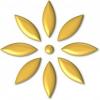CONTEXT: Many individuals suffer from various kinds of chronic pain. Some controlled studies on distant healing for chronic pain exist, but no definitive conclusion has been established.
OBJECTIVE: To study the effects of distant healing performed by a professional Japanese healer on chronic pain.
DESIGN: A double-blind randomized controlled study. SETTING: Holos University, Fair Grove, Missouri.
SUBJECTS: People suffering from chronic pain (not caused by clear organic diseases or that persists long after a reasonable period of healing following injuries or surgery) were recruited through local radio and newspaper advertising. Subjects were randomly assigned to a treatment group or control group using a double-blind procedure.
INTERVENTIONS: All subjects met the healer at the initial session at Holos University. At the session, a 20-minute group meditation was performed. The healer went back to Japan after the session and started distant healing only to the treatment group for a 2-month period. All participants were asked to meditate for 20 minutes every day during this 2-month period.
OUTCOME MEASURES: The visual analog scale and McGill Pain Questionnaire.
RESULTS: A total of 17 subjects were recruited, and 16 subjects completed the study. Comparison of pretreatment and posttreatment visual analog scale indicated a slightly significant effect of distant healing (P=.056). The Present Pain Intensity Scale showed significant improvement in the treatment group compared to the control group (P=.0016). The Pain Rating Index showed improvement in the treatment group, but the difference between both groups was not statistically significant (P=.12).
 Healing Intention: Setting the intention to heal as “making the decision that you want to get well, even if you don’t know how.” Setting the intention to heal does not require that a person know the exact path that will heal him from a major depression or other mental health disorder. It just requires that he or she wants be well.
Healing Intention: Setting the intention to heal as “making the decision that you want to get well, even if you don’t know how.” Setting the intention to heal does not require that a person know the exact path that will heal him from a major depression or other mental health disorder. It just requires that he or she wants be well.